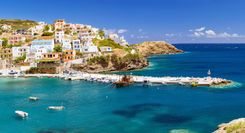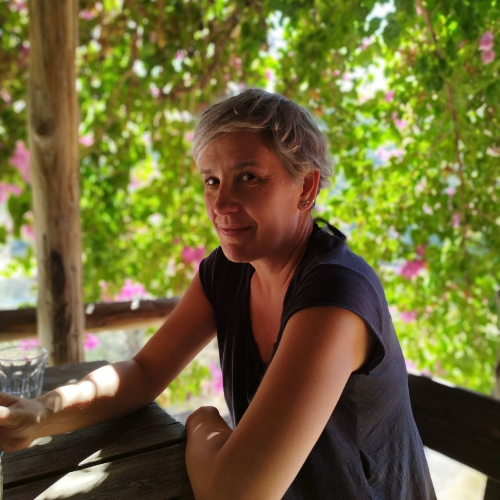7. Go party in Mykonos
This is Greece turned all the way up. Mykonos does nightlife better than anywhere in the Aegean – a non-stop summer scene of cocktails, DJs, and dancing on tables that starts in the afternoon and can roll on until sunrise. Think beach clubs at Super Paradise, bars packed into the alleys of Mykonos Town, and rooftop terraces where no one’s checking the time.
The island has gone from a 1960s hippy stop to a full-blown jet-set hub. These days, it’s the most high-profile, most expensive, and most crowded of the Cyclades. In August, the population swells into the millions. But it still works. The beaches are lively, the drinks keep flowing, and the mood stays open-minded.
Mykonos built its reputation as the gay capital of the Mediterranean, and though the scene has evolved, the island remains proudly inclusive. Mykonos Town, Super Paradise, and Eliá still draw a strong LGBTQ+ crowd, but everyone’s welcome pretty much everywhere – locals are used to all kinds of visitors, and have been since the first barefoot backpackers showed up sharing hand-rolled cigarettes.
If you’re wondering about the best areas to stay in Mykonos, base yourself in Mykonos Town if nightlife is your priority. For a more relaxed vibe, look at Ornos or Platis Gialos – both have great beaches with easy access to the action but fewer 4 am wake-up calls.
If you want tradition or quiet, go elsewhere. If you want beaches, music, and full-throttle summer, Mykonos still delivers.
How to get to Mykonos
- By plane – Direct flights from Athens take about 40 minutes. In summer, the island connects with major European cities.
- By ferry – Fast ferries run from Athens (Piraeus and Rafina), Santorini, Naxos, and other Cyclades. Book ahead in high season.
When to visit Mykonos
- June to early July – Clubs open, crowds manageable, prices not yet sky-high.
- Late July to August – Peak party season. It’s packed, hot, and expensive – but the energy is unmatched.
- September – Things start to slow down, but the weather and nightlife are still good.
- October to May – Off-season. Bars and clubs shut, beaches empty, flights limited.

























